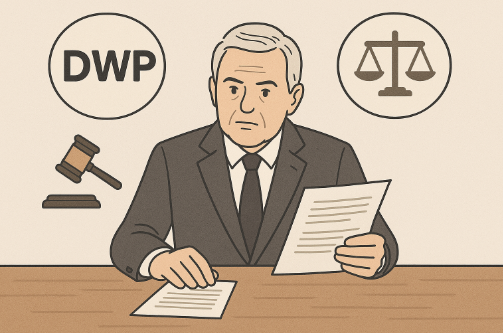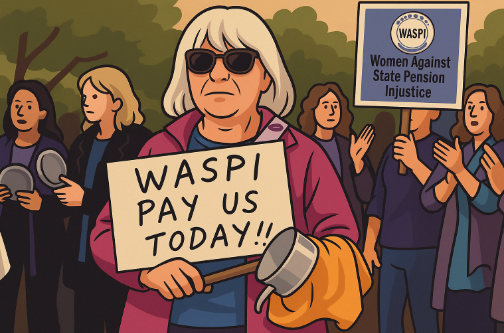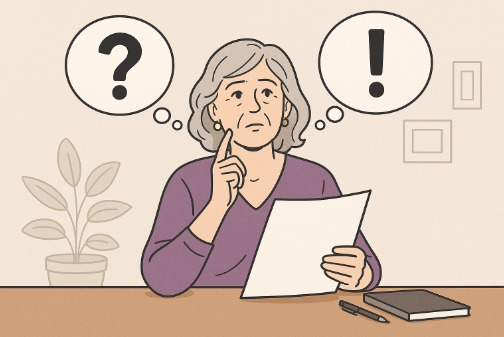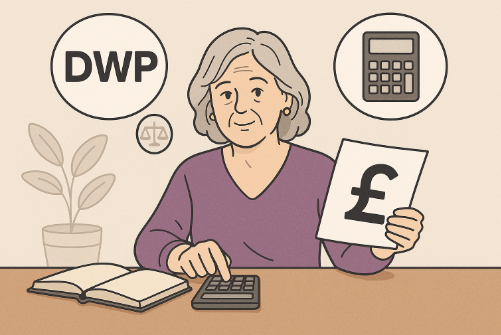Introduction
The fight for WASPI DWP Pension Compensation has become one of the most high-profile justice campaigns in the UK. Millions of women born in the 1950s saw their State Pension Age rise, in some cases by six years, without fair warning from the Department for Work and Pensions (DWP).
In this guide, you’ll discover:
-
Who qualifies as a WASPI women.
-
What the Ombudsman found and recommended.
-
The Government’s response and ongoing legal battles.
-
How to check your eligibility and protect yourself from scams.
What Is the WASPI Campaign and Why Does Pension Compensation Matter?
Which group of women does the WASPI campaign represent?
The WASPI campaign stands for Women Against State Pension Inequality, a UK group founded in 2015 that advocates for women born in the 1950s affected by poorly communicated state pension age changes.
-
Around 3.6 million UK women are potentially affected.
-
The campaign calls for fair, fast, and final compensation.
-
It focuses on poor communication from DWP rather than opposing pension age equality itself.
Who qualifies as a WASPI women?
WASPI women are those born between 6 April 1950 and 5 April 1960, whose pension age was increased—sometimes by up to six years—without enough notice.
- Between April 6, 1950, and April 5, 1960, you were born.
- Your State Pension Age was increased without adequate notice.
-
You suffered financial or lifestyle disruption as a result.
What changes to the State Pension Age triggered the campaign?
Under the 1995 and 2011 Pensions Acts, the State Pension Age for women rose from 60 to 65, and later 66. The acceleration left many women with limited time to adapt.
-
The 2011 Act sped up equalisation by 18 months.
-
Thousands had already left the workforce when they learned of the change.
-
The shift disrupted long-term savings and retirement planning.
Why is compensation being sought from DWP?
The DWP’s correspondence handling was deemed to be maladministration by the Parliamentary and Health Service Ombudsman.
-
Many women received no direct letter until just before their new pension age.
-
The lack of notice caused financial hardship and stress.
- Payouts to make up for missed retirement years are advocated by campaigners.
What Did the Ombudsman Decide About DWP’s Handling of State Pension Changes?

What communication failures or maladministration did the Ombudsman identify?
The Ombudsman noted serious failures in how the DWP informed women—especially between 2005 and 2006.
-
Letters were not sent to all women affected.
-
Online and media announcements were limited in reach.
-
Many women relied on friends or news to learn about changes.
How did these failures impact women’s retirement planning?
Many people experienced emotional and financial hardship as a result of the notice gap.
-
Some women had to continue working well into their mid-60s unexpectedly.
-
Many depleted personal savings earlier than planned.
-
Mental health impacts included stress, anxiety, and depression.
What compensation amounts did the Ombudsman recommend?
The report suggested payouts of £1,000–£2,950 per women, costing billions in total.
-
Suggested payouts range from £1,000 to £2,950 per woman.
-
Total potential cost estimated at £10–10.5 billion.
-
Recommendations are influential but not legally binding.
How Has the Government Responded to the Ombudsman’s Recommendations?
What reasons has the Government given for rejecting compensation?
The government cited fairness to taxpayers and precedent concerns.
-
Claims other groups could demand similar payouts.
-
Argues funds should be prioritised for current public needs.
-
Says full public awareness existed by 2006.
What evidence has DWP presented about awareness levels among women?
By 2006, 90% of women were aware of the shift, according to the DWP.
-
Data is based on national survey estimates.
-
Critics say the survey did not target the most affected.
-
Awareness did not mean adequate time to prepare.
How has the Government addressed fairness or precedent concerns?
Officials warn that paying WASPI could lead to billions in similar claims.
-
Precedent could affect other pension-related disputes.
-
Cited need to preserve the stability of pension funding.
-
Preference for non-compensation reforms instead.
What Legal Path Are WASPI Women Pursuing?

What is the High Court cost-capping order and why is it important?
This order limits WASPI’s potential legal costs to £60,000.
-
Prevents campaigners from facing unlimited financial risk.
-
Levels the playing field against a government department.
-
Allows continued legal action without bankruptcy fears.
How does this order protect the legal campaign from financial risks?
For WASPI activists, it serves as a legal safety net.
-
Caps government’s liability if they lose at £90,000.
-
Encourages court cases by reducing uncertainty.
-
Shields grassroots campaigns from collapse.
What might this mean for future compensation claims?
If WASPI wins, it could set a legal precedent.
-
May force Parliament to act quickly.
-
Could influence similar cases for other demographics.
-
Puts political pressure on ministers before elections.
What Political and Public Support Exists for Compensation?
What petitions or parliamentary debates have been raised?
Numerous petitions and debates have brought the issue to Parliament.
-
Petitions have gathered over 100,000 signatures.
-
Multiple debates held in Commons since 2016.
-
Pressure from MPs continues to mount.
Which MPs or local councils have shown support?
Politicians across parties have supported WASPI calls.
-
SNP, some Labour MPs, and independents are vocal supporters.
-
Local councils like Eastleigh have passed motions backing WASPI.
-
Cross-party support growing ahead of elections.
How has public sentiment and media coverage evolved?
Public sympathy remains strong.
-
Media coverage peaks during legal announcements.
-
Stories highlight personal hardship and inequality.
-
Social media campaigns keep momentum alive.
What Should WASPI Women Know and Do Now?

How do I know if I am due WASPI compensation?
Check your date of birth and pension statements.
-
Born between 6 April 1950 and 5 April 1960.
-
Experienced pension age delay without proper notice.
-
Possibly received DWP communication late or not at all.
Do I need to apply for WASPI compensation?
Currently, no application process exists.
-
Wait for official announcements from Department of Work and Pension or Parliament.
-
Beware of anyone asking for application fees.
-
Use official WASPI or Ombudsman channels only.
How can women check if they are affected?
Use online eligibility tools and birth date checks.
-
WASPI calculator estimates eligibility.
-
Cross-check with official government records.
-
Consult pension advisors for clarity.
What resources or official channels should they follow for updates?
Reliable updates come from:
-
WASPI official website and newsletters.
-
Ombudsman’s public reports.
-
Verified UK news outlets.
How can they guard against scams or misinformation in compensation offers?
Fraudsters are targeting WASPI women.
-
Do not share bank details unless verified.
-
Avoid unsolicited calls and emails.
-
Report suspected scams to Action Fraud UK.
WASPI DWP Pension Compensation Calculator

Is there an official WASPI compensation calculator?
No official calculator exists from the DWP.
-
Third-party tools offer estimates only.
-
Use them cautiously for planning purposes.
-
Results are not guaranteed payouts.
How can affected women estimate potential payouts?
Calculators use your birth date and delay period.
-
Estimates range from £1,000 to £2,950.
-
Based on Ombudsman compensation levels.
-
Figures could change if court rules differently.
Why are online calculators often inaccurate or misleading?
They cannot predict legal or political outcomes.
-
May not factor in your exact circumstances.
-
Often built by non-official sources.
-
Should be seen as guides, not guarantees.
Quick Reference Table – WASPI Compensation Facts
| Fact | Details |
|---|---|
| Eligible Birth Dates | 6 April 1950 – 5 April 1960 |
| Potential Compensation | £1,000 – £2,950 |
| Estimated Total Cost | £10–10.5 billion |
| Official Scheme? | None currently |
| Risk of Scams? | High – verify all contact |
Conclusion
The battle for WASPI DWP Pension Compensation is far from over. Maladministration was substantiated by the Ombudsman’s investigation, yet the government is still unwilling to make amends. With the help of the public and a cost-capping injunction that shields activists from financial disaster, legal action is still ongoing.
If you are affected:
-
Stay updated via official channels.
-
Be cautious of scams.
-
Keep documentation that could support a future claim.
Justice for WASPI women is still possible—but persistence will be key.
FAQs
What does WASPI stand for and who is a WASPI women?
WASPI = Women Against State Pension Inequality. WASPI women are those born between 6 April 1950 and 5 April 1960, who were affected by state pension age changes without adequate notice.
Why is compensation being sought from DWP?
Because the Ombudsman ruled that DWP committed maladministration by failing to communicate pension age changes properly.
Why is the Government rejecting compensation?
The Government argues that compensation would be too costly, unfair, and may set unwanted precedent.
Do I need to apply to get compensation?
Not currently—no application process exists until official action is taken.
Are there scams targeting WASPI women?
Yes—there’s a rise in misinformation and fraud. Only share your details via official, verified channels.

I’m Adam Milne, a business writer and co-author at UKBusinessMag.co.uk. I’m passionate about simplifying complex topics—whether it’s tax, startup strategy, or digital marketing—so that entrepreneurs can take action with confidence. With years of experience in small business consultancy, I bring a practical perspective to every piece I write, helping readers turn ideas into results.



